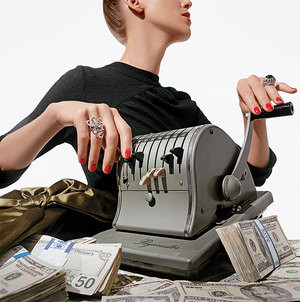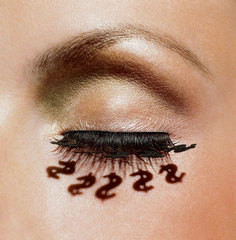Five steps to starting a new life
 Family budget planning 1.Calculate expenses and define budget itemsFirst, you will have to be honest about what you spend money on. Counting money, especially money that you no longer have, is not the most exciting activity. But the game is worth the candle: this way you can save up to 30% of your monthly income. To begin with, "eyeball" a small monthly estimate. Experts call this our "ideal idea of expenses", which most often has nothing to do with reality. The next step will help you get back down to earth - a money diary, where you will enter all your expenses for the day every day. To ensure that the information corresponds to reality, collect all (all!) material evidence - receipts from supermarkets, dry cleaners, payment slips from mobile operators, in general, those pieces of paper that will help you remember what the money was spent on. To avoid using a calculator, download a "home accounting" program from the Internet; it will not only give you a picture of your actual expenses, but will also systematize your main expense items. This is not a quick process, though; getting used to your new life will take one to three months. However, by comparing your ideal and real financial plans, you will find black holes into which huge sums fall. Having filled them in, you can start planning your budget with a clear conscience. Ideal Budget Formula Essential expenses - 50% "Safety cushion" - 10–20% Pocket money, entertainment, shopping - 30–40% 2. Pay yourself and make a financial plan By "pay yourself" salary, we mean your regular stash. Start regularly putting aside 10-20% of your earnings and you will see that in a few months you will have some fat - money. Financiers call this a safety cushion, which ideally should be 3-6 monthly salaries. It performs two functions at once: insurance in case of a crisis, as well as start-up capital for realizing your dream. Any person's budget consists of fixed expenses and unplanned expenses. First, sort out the fixed ones - for housing, food, transportation, children and parents, mobile communications, education and loan payments. And also for a fitness club and medical services. On average, it is worth setting aside about 50% of all expenses for all this - it is difficult to save here. If you rent an apartment, keep in mind that ideally, rental expenses should not exceed 30-40% of the budget. The rest of the money (30-40%) is pocket money, it can be spent painlessly during the month. Of course, large purchases should be planned in advance and in no case paid for with consumer loans and credit cards - these are the most expensive loans of all possible. Computer programs for controlling expenses 1. "Home accounting", 300 rubles 2. "Personal finance accounting 3.00", 210 rubles 3. "Oracle money", 580 rubles 4. "1C: Money", 200 rubles 5. "Money Microsoft", 930 rubles 6. "AceMoney", 300 rubles Free programs 1. "Cash" (www.winceware.ru/cgi-bin/program.pl?prog_id=865). 2. "Home Budget" (www.softp.ru/i50209/) 3. "Personal Accounting" (www.freeware.ru/program_prog_id_4002.html) 4. "CashFly" (www.msolt.chat.ru/) - the program also contains reminders about birthdays of loved ones, a diary. 5. "PFO 2002" (www.klerk.ru/soft/dir/?action=detail&idev=332).
Family budget planning 1.Calculate expenses and define budget itemsFirst, you will have to be honest about what you spend money on. Counting money, especially money that you no longer have, is not the most exciting activity. But the game is worth the candle: this way you can save up to 30% of your monthly income. To begin with, "eyeball" a small monthly estimate. Experts call this our "ideal idea of expenses", which most often has nothing to do with reality. The next step will help you get back down to earth - a money diary, where you will enter all your expenses for the day every day. To ensure that the information corresponds to reality, collect all (all!) material evidence - receipts from supermarkets, dry cleaners, payment slips from mobile operators, in general, those pieces of paper that will help you remember what the money was spent on. To avoid using a calculator, download a "home accounting" program from the Internet; it will not only give you a picture of your actual expenses, but will also systematize your main expense items. This is not a quick process, though; getting used to your new life will take one to three months. However, by comparing your ideal and real financial plans, you will find black holes into which huge sums fall. Having filled them in, you can start planning your budget with a clear conscience. Ideal Budget Formula Essential expenses - 50% "Safety cushion" - 10–20% Pocket money, entertainment, shopping - 30–40% 2. Pay yourself and make a financial plan By "pay yourself" salary, we mean your regular stash. Start regularly putting aside 10-20% of your earnings and you will see that in a few months you will have some fat - money. Financiers call this a safety cushion, which ideally should be 3-6 monthly salaries. It performs two functions at once: insurance in case of a crisis, as well as start-up capital for realizing your dream. Any person's budget consists of fixed expenses and unplanned expenses. First, sort out the fixed ones - for housing, food, transportation, children and parents, mobile communications, education and loan payments. And also for a fitness club and medical services. On average, it is worth setting aside about 50% of all expenses for all this - it is difficult to save here. If you rent an apartment, keep in mind that ideally, rental expenses should not exceed 30-40% of the budget. The rest of the money (30-40%) is pocket money, it can be spent painlessly during the month. Of course, large purchases should be planned in advance and in no case paid for with consumer loans and credit cards - these are the most expensive loans of all possible. Computer programs for controlling expenses 1. "Home accounting", 300 rubles 2. "Personal finance accounting 3.00", 210 rubles 3. "Oracle money", 580 rubles 4. "1C: Money", 200 rubles 5. "Money Microsoft", 930 rubles 6. "AceMoney", 300 rubles Free programs 1. "Cash" (www.winceware.ru/cgi-bin/program.pl?prog_id=865). 2. "Home Budget" (www.softp.ru/i50209/) 3. "Personal Accounting" (www.freeware.ru/program_prog_id_4002.html) 4. "CashFly" (www.msolt.chat.ru/) - the program also contains reminders about birthdays of loved ones, a diary. 5. "PFO 2002" (www.klerk.ru/soft/dir/?action=detail&idev=332). 3.Come up with a financial dream and start making it happenFinanciers (who are romantics at heart, they just don’t show it) claim that each person’s finances are designed to implement two scenarios at once: making a dream come true and being able to live here and now. Therefore, after we have decided on our expenses, it’s time to dream. After all, while we have nothing to save for, our money will melt away all the time. What to dream about? Love is not for sale, but beautiful laptops, cars, your own apartments, houses in Montenegro are... Goals may change over time, but you shouldn’t forget about them in any case. Take a piece of paper and write down all your material dreams. Then try to figure out how much something might cost. 4. Talk to a smart personA financial consultant can become a very important person in your life. This is a specialist who professionally manages your finances and gives advice on how to manage money like an adult. To be precise, it is the valuable part that we pay ourselves every month, that is, the stash. Its task is to plan your expenses correctly, and at the same time invest your savings depending on the goals that you define together (save or earn). Experts say that people have financial problems in two cases - when there is no money and when there is money. So far, there are many consultants in our country who solve the second problem. You need to look for them in private consulting firms, management and investment companies, banks that provide private banking services (however, the latter is relevant only for those who have at least 250 thousand dollars in their account). To determine the level of professionalism of a financial consultant, find out what kind of experience he has, how many clients he has and whether you can contact them for recommendations. On average, personal consultants charge from 50 to 150 dollars per hour for their services. If a consultant agrees to work with you for free, do not trust him. Most likely, he is nothing more than a seller of financial products - mutual funds (mutual investment funds) or services of investment companies. You will be helped
3.Come up with a financial dream and start making it happenFinanciers (who are romantics at heart, they just don’t show it) claim that each person’s finances are designed to implement two scenarios at once: making a dream come true and being able to live here and now. Therefore, after we have decided on our expenses, it’s time to dream. After all, while we have nothing to save for, our money will melt away all the time. What to dream about? Love is not for sale, but beautiful laptops, cars, your own apartments, houses in Montenegro are... Goals may change over time, but you shouldn’t forget about them in any case. Take a piece of paper and write down all your material dreams. Then try to figure out how much something might cost. 4. Talk to a smart personA financial consultant can become a very important person in your life. This is a specialist who professionally manages your finances and gives advice on how to manage money like an adult. To be precise, it is the valuable part that we pay ourselves every month, that is, the stash. Its task is to plan your expenses correctly, and at the same time invest your savings depending on the goals that you define together (save or earn). Experts say that people have financial problems in two cases - when there is no money and when there is money. So far, there are many consultants in our country who solve the second problem. You need to look for them in private consulting firms, management and investment companies, banks that provide private banking services (however, the latter is relevant only for those who have at least 250 thousand dollars in their account). To determine the level of professionalism of a financial consultant, find out what kind of experience he has, how many clients he has and whether you can contact them for recommendations. On average, personal consultants charge from 50 to 150 dollars per hour for their services. If a consultant agrees to work with you for free, do not trust him. Most likely, he is nothing more than a seller of financial products - mutual funds (mutual investment funds) or services of investment companies. You will be helped
- Consulting company Fullfreedom Investments http://www.fullfreedom.ru Tel. (495) 642-9498.
- Consulting company Rich Consultinghttp://www.rich4you.ruTel. (495) 788-7285.
- Consulting group "Personal capital" http://www.e-financialconsulting.com Tel.: in Moscow 8 (903) 612-2917, in Minsk +375 (29) 648-8250.
5.Don't be afraid to take your stash to the bankThis is the first step towards your own capital. Even a deposit account (fixed-term deposit) is already an investment. And then, as funds accumulate in the account, they can be invested in longer-term and more profitable instruments (mutual funds, real estate). Just keep in mind that annual interest rates on bank deposits barely cover inflation (in 2006, it was about 9% per year). A multi-currency deposit can be a solution, when within one deposit the amount is divided into several parts in different currencies: rubles, dollars and euros. The yield on each part will be different, but overall it will help to save money. When opening accounts, ask a bank employee to calculate the effective interest rate for you, that is, how much you will receive on average from all three currencies.
Purse and Life
We asked three girls to honestly describe,that they spend money every month. And the director of OOO "Consulting Group "Personal Capital" Vladimir Savenok looked sternly at their essays and assessed whether they were distributing their expenses wisely. Questionnaire №1Name: Elizaveta City:Saint Petersburg Age: 30, married, daughter is 4.5 years oldProfession: financial analystMonthly income: $1,300Monthly expenses (in $)Apartment: 100. Food: 200. Food at work: 50. Car: 100. Mobile phone: 20. Clothes: 100. Cosmetics: 50. Personal care: 100. Education: 50 (payment for kindergarten and clubs for the child). Travel: 100. Entertainment: 50. Housekeeper: 30.Medicine: 30. Loan payments: none Total (in $)Expenses: 880 (which is 67% of income)Stash: 100 Additional expenses:Car: 1,000 per year for insurance and 500 per year for scheduled maintenance.Fitness: 600 per year. Latest purchase: TV (400)Financial motto: Spend less, earn more, and don't borrow. What the doctor would say:Elizabeth has a great financial motto, which could only be supplemented with one more principle: manage your money, not let it manage you. As of today, Lisa's income is $320 more than her expenses. I don't see any excessive expenses in her budget and can't give any recommendations on how to reduce them: Lisa has already cut everything back a lot. The only thing I noticed was her car expenses. Is it worth buying expensive $1,000 insurance for it? And the annual maintenance costs are quite high. If Lisa invests $320 monthly, the accumulated amount will cover all annual expenses (insurance, gym membership), and she will still have $1,740 left. Not bad for an income of $1,300.
Questionnaire №1Name: Elizaveta City:Saint Petersburg Age: 30, married, daughter is 4.5 years oldProfession: financial analystMonthly income: $1,300Monthly expenses (in $)Apartment: 100. Food: 200. Food at work: 50. Car: 100. Mobile phone: 20. Clothes: 100. Cosmetics: 50. Personal care: 100. Education: 50 (payment for kindergarten and clubs for the child). Travel: 100. Entertainment: 50. Housekeeper: 30.Medicine: 30. Loan payments: none Total (in $)Expenses: 880 (which is 67% of income)Stash: 100 Additional expenses:Car: 1,000 per year for insurance and 500 per year for scheduled maintenance.Fitness: 600 per year. Latest purchase: TV (400)Financial motto: Spend less, earn more, and don't borrow. What the doctor would say:Elizabeth has a great financial motto, which could only be supplemented with one more principle: manage your money, not let it manage you. As of today, Lisa's income is $320 more than her expenses. I don't see any excessive expenses in her budget and can't give any recommendations on how to reduce them: Lisa has already cut everything back a lot. The only thing I noticed was her car expenses. Is it worth buying expensive $1,000 insurance for it? And the annual maintenance costs are quite high. If Lisa invests $320 monthly, the accumulated amount will cover all annual expenses (insurance, gym membership), and she will still have $1,740 left. Not bad for an income of $1,300. Questionnaire #2Name: OlgaCity: MoscowAge:26, married, no childrenOccupation: PR specialistMonthly income: $4000Monthly expenses (in $)Housing: 0.Food: 450.Mobile communications: 80.Loan payments: 150 (car).Transportation (car): 150.Transportation (taxi): 150.Internet: 15.Clothes: 300.Cosmetics: 100.Personal care: 250.Travel: 250.Entertainment: 50.Medical services: 70.Purchase of magazines, books and DVDs: 100.Total (in $)Expenses: 2115, which is 53% of income.Stash: 4000 in a bank deposit.Last major purchase: a roof for a summer house (3500 in October last year) years)Financial motto: The more I spend, the more I earn.Financial goal: A one-room apartment in the city center.What the doctor will say:With a high income, Olga's expenses are significantly less than her regular expenses - $2,100. But here a logical question arises: what does the girl do with this money and why did she take out a loan for a car instead of buying it with her own money? As for her financial goal, the cost of such an apartment is quite high, and even with a mortgage loan, she will have to make a significant down payment - approximately $100,000. Olga does not have this money today, but she can easily create capital if she starts making regular investments. I recommend cutting expenses on clothing, personal care and taxis (it is unclear why she spends so much on it when she has her own car) as well as the press and DVDs by about half. Then Olga will be able to use monthly payments to purchase an apartment in Moscow worth $300,000 and purchase it in 2009 using a $200,000 mortgage loan.
Questionnaire #2Name: OlgaCity: MoscowAge:26, married, no childrenOccupation: PR specialistMonthly income: $4000Monthly expenses (in $)Housing: 0.Food: 450.Mobile communications: 80.Loan payments: 150 (car).Transportation (car): 150.Transportation (taxi): 150.Internet: 15.Clothes: 300.Cosmetics: 100.Personal care: 250.Travel: 250.Entertainment: 50.Medical services: 70.Purchase of magazines, books and DVDs: 100.Total (in $)Expenses: 2115, which is 53% of income.Stash: 4000 in a bank deposit.Last major purchase: a roof for a summer house (3500 in October last year) years)Financial motto: The more I spend, the more I earn.Financial goal: A one-room apartment in the city center.What the doctor will say:With a high income, Olga's expenses are significantly less than her regular expenses - $2,100. But here a logical question arises: what does the girl do with this money and why did she take out a loan for a car instead of buying it with her own money? As for her financial goal, the cost of such an apartment is quite high, and even with a mortgage loan, she will have to make a significant down payment - approximately $100,000. Olga does not have this money today, but she can easily create capital if she starts making regular investments. I recommend cutting expenses on clothing, personal care and taxis (it is unclear why she spends so much on it when she has her own car) as well as the press and DVDs by about half. Then Olga will be able to use monthly payments to purchase an apartment in Moscow worth $300,000 and purchase it in 2009 using a $200,000 mortgage loan. Questionnaire № 3Name: Nadezhda City:Novosibirsk Age: 29, divorced, one child Occupation: financial manager Monthly income: $5,000 Monthly income (in $) Housing: 400. Food: 550. Transportation (car): 500. Children: 400. Mobile: 80. Loan payments: 1,480 (car). Clothes: 500. Cosmetics: 100. Personal care: 350. Travel: 400. Entertainment: 200 Total (in $) Expenses: 4,960, which is 99% of income. Stash: none. Last major purchase: Louis Vuitton suitcase (2,200) Financial credo: I spend everything I earn. I live here and now. Financial goal: Buy a nice apartment with a mortgage. What the doctor will say: With a good income - good expenses. But today Nadezhda doesn’t even have a reserve fund — everything goes to expenses. With an income of $5,000, there should be a reserve fund. My recommendations for cutting expenses are as follows: clothes — up to $200; personal care — up to $150. Car — from $500 to $250. (I don’t quite understand how a car can eat up $500 a month?!) The car loan needs to be repaid early and this amount used for investing. Starting next month, Nadezhda is quite capable of regularly investing at least $750 a month. And after repaying the loan — $2,230 a month. I also advise Nadezhda and other young ladies who are the main breadwinners in the family to definitely get life insurance. There are a lot of savings insurance programs, which, by the way, are very disciplined and require regular investments.
Questionnaire № 3Name: Nadezhda City:Novosibirsk Age: 29, divorced, one child Occupation: financial manager Monthly income: $5,000 Monthly income (in $) Housing: 400. Food: 550. Transportation (car): 500. Children: 400. Mobile: 80. Loan payments: 1,480 (car). Clothes: 500. Cosmetics: 100. Personal care: 350. Travel: 400. Entertainment: 200 Total (in $) Expenses: 4,960, which is 99% of income. Stash: none. Last major purchase: Louis Vuitton suitcase (2,200) Financial credo: I spend everything I earn. I live here and now. Financial goal: Buy a nice apartment with a mortgage. What the doctor will say: With a good income - good expenses. But today Nadezhda doesn’t even have a reserve fund — everything goes to expenses. With an income of $5,000, there should be a reserve fund. My recommendations for cutting expenses are as follows: clothes — up to $200; personal care — up to $150. Car — from $500 to $250. (I don’t quite understand how a car can eat up $500 a month?!) The car loan needs to be repaid early and this amount used for investing. Starting next month, Nadezhda is quite capable of regularly investing at least $750 a month. And after repaying the loan — $2,230 a month. I also advise Nadezhda and other young ladies who are the main breadwinners in the family to definitely get life insurance. There are a lot of savings insurance programs, which, by the way, are very disciplined and require regular investments.









